Juvenile
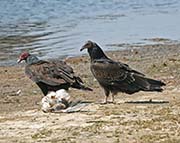
Gull carcass; Black headed vulture is a juvenile
09/07/2007 - Miller-Knox Regional Shoreline, Richmond, CA
Gull carcass; Black headed vulture is a juvenile
09/07/2007 - Miller-Knox Regional Shoreline, Richmond, CA
|
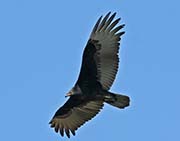
Juvenile
09/07/2007 - Miller-Knox Regional Shoreline, Richmond, CA
Juvenile
09/07/2007 - Miller-Knox Regional Shoreline, Richmond, CA
|
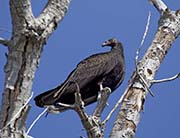
Juvenile
10/11/2009 - Gray Lodge Wildlife Area, CA
Juvenile
10/11/2009 - Gray Lodge Wildlife Area, CA
|
Adult

Note the Turkey Vulture's tongue
11/01/2011 - Doran Beach, Bodega Bay, CA
Note the Turkey Vulture's tongue
11/01/2011 - Doran Beach, Bodega Bay, CA
|

11/01/2011 - Doran Beach, Bodega Bay, CA
11/01/2011 - Doran Beach, Bodega Bay, CA
|

Won an Honorable Mention at Berkeley Camera Club
11/01/2011 - Doran Beach, Bodega Bay, CA
Won an Honorable Mention at Berkeley Camera Club
11/01/2011 - Doran Beach, Bodega Bay, CA
|
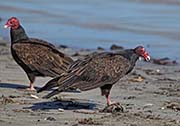
11/01/2011 - Doran Beach, Bodega Bay, CA
11/01/2011 - Doran Beach, Bodega Bay, CA
|
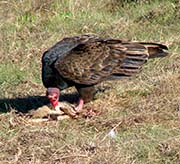
Feeding on a rabbit
12/01/2006 - Martin Luther King Jr Regional Park; Oakland, CA
Feeding on a rabbit
12/01/2006 - Martin Luther King Jr Regional Park; Oakland, CA
|
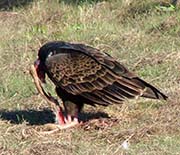
Note the rabbit skin being pulled by his head
12/01/2006 - Martin Luther King Jr Regional Park; Oakland, CA
Note the rabbit skin being pulled by his head
12/01/2006 - Martin Luther King Jr Regional Park; Oakland, CA
|

03/22/2007 - Upper Tidwell, Chico, California
03/22/2007 - Upper Tidwell, Chico, California
|

Note that there is no membrane between the nostrils
03/24/2007 - Martin Luther King Jr Regional Park; Oakland, CA
Note that there is no membrane between the nostrils
03/24/2007 - Martin Luther King Jr Regional Park; Oakland, CA
|
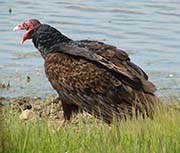
03/24/2007 - Martin Luther King Jr Regional Park; Oakland, CA
03/24/2007 - Martin Luther King Jr Regional Park; Oakland, CA
|
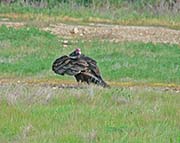
Not a great pic -- but like the dracula pose
03/24/2007 - Martin Luther King Jr Regional Park; Oakland, CA
Not a great pic -- but like the dracula pose
03/24/2007 - Martin Luther King Jr Regional Park; Oakland, CA
|

09/07/2007 - Miller-Knox Regional Shoreline, Richmond, CA
09/07/2007 - Miller-Knox Regional Shoreline, Richmond, CA
|

09/07/2007 - Miller-Knox Regional Shoreline, Richmond, CA
09/07/2007 - Miller-Knox Regional Shoreline, Richmond, CA
|
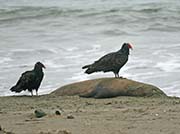
On a dead seal
09/20/2007 - Bodega Bay, CA
On a dead seal
09/20/2007 - Bodega Bay, CA
|
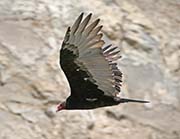
09/21/2007 - Drake's Beach, Point Reyes, CA
09/21/2007 - Drake's Beach, Point Reyes, CA
|

06/05/2008 - Point Lobos State Park (Carmel, CA)
06/05/2008 - Point Lobos State Park (Carmel, CA)
|
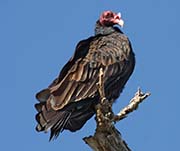
10/07/2008 - Sacramento Wildlife Refuge, CA
10/07/2008 - Sacramento Wildlife Refuge, CA
|

06/08/2009 - Point Lobos State Park (Carmel, CA)
06/08/2009 - Point Lobos State Park (Carmel, CA)
|
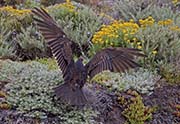
06/08/2009 - Point Lobos State Park (Carmel, CA)
06/08/2009 - Point Lobos State Park (Carmel, CA)
|
Diet:
Turkey Vultures are scavengers and feed almost exclusively on carrion
but they will occasionally eat vegetable matter, live insects and other
invertebrates.
They use their acute sense of smell (very rare in birds)
and their keen eyesight to find food.
Their bald head helps keep unwanted bacteria from infecting the vulture
as they feed on carrion.
Also, having no feathers on they head make it less likely their head would be
caught in the prey's body as they feed.
Courtship:
One of the Turkey Vultures' courtship ritual involves several
vultures gathering in a circle where
they hop around the circle with their wings partially spread.
They are considered monogamous.
Nesting:
The Turkey Vulture will nest on the ground, in caves, abandoned barns, etc.
They do not build a nest, but will scratch out an indentation in the ground.
Both parents will incubate the eggs and feed the chicks.
They brood 1-3 chicks.
The chicks are helpless at birth.
Habitat and Range:
Turkey Vultures are seen throughout North and South American
from southern Canada to the south-most tip of South America.
They can be found in many open and semi-open areas from
subtropical forests to deserts.
They favor open areas that are near woods for nesting.
At night they will roost in trees or man-made structures in large groups.
I have seen this behavior at the Sacramento Wildlife Refuge at twilight.
Vocalization:
Turkey Vultures only making grunting and hissing sounds
because they lack a syrinx (voice box for birds).
Plumage/Molt:
Male and females plumage is the same.
Molting is done over a long period during the summer.
This molting overlaps with their breeding season.
Migration:
Turkey Vultures that live in the northern parts of
North America migrate south during the winter.
The south can be the southern U.S. or South America.
Turkey Vultures who live in warmer climes may not migrate.
When they migrate, flock size can be quite large (10,000 birds).
Tongue/feet:
The toes of the Turkey Vulture have three toes facing forward
and one to the back.
There is a slight webbing between the front toes.
Their feet are weaker than a Black Vulture's which
means that they are unable to pick up and carry away large prey.
Turkey Vultures also defecate feces and urine on their feet.
This is believed to help cool the feet and the strong acid in feces/urine may
kill any bacteria remaining from the vulture's food.
Bibliography:
- Kaufman, Kenn, Lives of North American Birds,Houghton Mifflin Company, 1996
- Howell, Steve N.G., Molt in North American Birds,Houghton Mifflin Harcourt, 2010
- http://vulturesociety.homestead.com/TVFacts.html Turkey Vulture Facts, Maps, and Statistics, Accessed June, 2012
- http://en.wikipedia.org The Free Encyclopedia, Accessed June, 2012
- http://www.hawkmountain.org Hawk Mountain, Accessed June, 2012
Top of Page




















